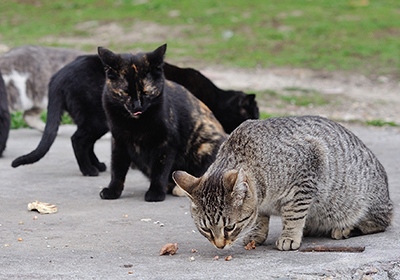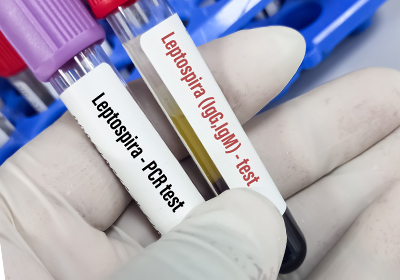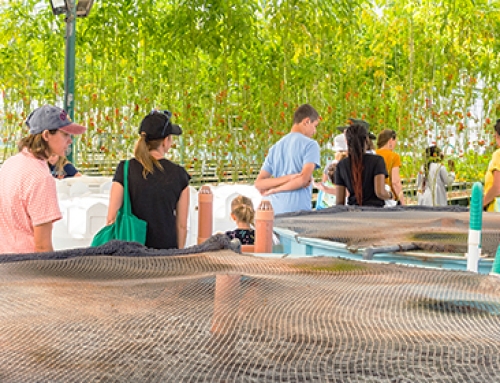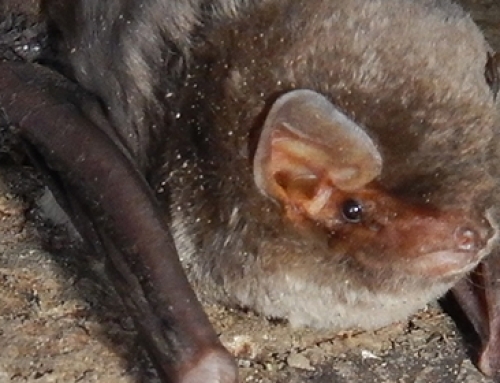Leptospirosis is one of the world’s most widespread zoonotic diseases, which can infect both humans and many animal species, including dogs and, more rarely, cats. However, the role of the cat as a susceptible host and potential environmental reservoir of Leptospirosis has not yet been clearly determined.

Researchers from the IZSVe have described the first European case of Leptospira interrogans, serogroup Australis ST24 infection in a young outdoor cat. The animal also presented comorbidity with feline panleukopenia (FPV). Some aspects of Leptospirosis in cats remain unclear. The aim of epidemiological studies is to determine the ecopathology of the disease and this species’ role as a possible reservoir of infection.
A study published in the scientific journal Tropical Medicine and Infectious Disease brings fresh experimental evidence to help better understand this disease. Researchers from the Istituto Zooprofilattico Sperimentale delle Venezie (IZSVe) have described the first European case of Leptospira interrogans, serogroup Australis ST24 infection in a young outdoor cat. The animal also presented comorbidity with feline panleukopenia (FPV).
Some aspects of Leptospirosis in cats remain unclear. The aim of epidemiological studies is to determine the ecopathology of the disease and this species’ role as a possible reservoir of infection. For example, despite being potentially exposed to infection through contact with the environment and synanthropic and/or wild fauna, outdoor cats present with clinical disease far less frequently than dogs.
The cat harbouring the infection presented a severe, ultimately lethal picture, due in part to comorbidity with FPV. Feline panleukopenia virus causes, amongst other things, immunodepression and consequently could have been conducive to the clinical expression of leptospirosis, combined with other factors, as young age and outdoor life.
While no correlation has to date been demonstrated between debilitating/immunosuppressive infectious diseases and severe forms of leptospirosis in cats, some suspected cases of leptospirosis have been documented in felines with intercurrent immunosuppressive and/or debilitating diseases.
Seroprevalence of leptospirosis in outdoor cats
A study conducted between 2014 and 2016 and reported in the above-mentioned scientific paper, provided further information on exposure to Leptospirosis in apparently healthy cats living in feline oases and colonies in North-East Italy. The study was carried out by IZSVe, in partnership with the National Reference Centre for Leptospirosis of the Veterinary Health and Research Organization for Animal Health and Food Safety of Lombardy-Emilia Romagna and San Marco Veterinary Clinic of Veggiano (Padova), supported by funding from the Italian Ministry of Health (RC IZSVE 16/12).

Serological tests on 95 apparently healthy outdoor cats revealed 10.5% seroprevalence – albeit with borderline or poorly significant titres – for the serovars Grippotyphosa, Icterohaemorrhagiae, Bratislava, Canicola, and Ballum. The evidence gathered by the researchers seem to suggest that healthy cats have a natural resistance to clinical leptospirosis, which may have evolved by virtue of their close ecological relationship with small rodents, which form their primary prey
Serological tests on 95 apparently healthy outdoor cats revealed 10.5% seroprevalence – albeit with borderline or poorly significant titres – for the serovars Grippotyphosa, Icterohaemorrhagiae, Bratislava, Canicola, and Ballum. No animal was found to be actively shedding the virus by means of molecular tests.
In the four selected cases of symptomatic cats with suspected leptospirosis affected by intercurrent pathologies (e.g. Feline Herpes Virus infection, FeLV, FIV, lymphoma, hyperthyroidism), considerably higher antibody titres were detected towards the Grippotyphosa, Bratislava, Icterohaemorrhagiae and Copenagheni serogroups and one animal was found to be an active shedder at PCR urine testing.
The evidence gathered by the researchers on:
- the prevalence of low titre anti-Leptospira antibodies in outdoor cats in the absence of clinical signs;
- high antibody titres detected in four suspected clinical cases already affected by debilitating pathologies;
- direct detection of interrogans ST24 in a young cat affected by FPV,
seem to suggest that healthy cats have a natural resistance to clinical leptospirosis, which may have evolved by virtue of their close ecological relationship with small rodents, which form their primary prey. Further studies are warranted to better define the epidemiological role cats could play as reservoirs of pathogenic Leptospira, as suspected by several researchers.
Read the scientific article on Tropical Medicine and Infectious Disease »






